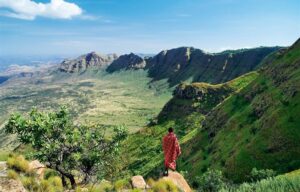The Great Wildebeest Migration in Kenya’s Maasai Mara
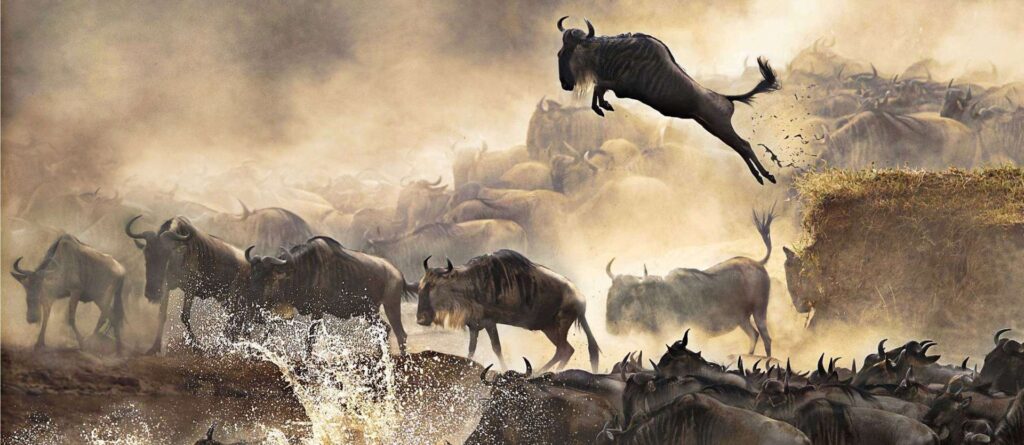
In the heart of East Africa, one of the planet’s most extraordinary natural phenomena unfolds each year as over 1.5 million wildebeest, accompanied by zebras and gazelles, journey across the Serengeti and Maasai Mara in search of greener pastures. This ancient migration represents the largest land animal migration on Earth, transforming the landscape of Kenya’s Maasai Mara National Reserve into a theater of survival, drama, and breathtaking wildlife spectacle.
The Magnificent Scale of Migration
The Great Wildebeest Migration is truly staggering in its scope. Over 1.5 Million Wildebeests migrate alongside 200,000 zebras and 400,000 gazelles in the largest land migration on Earth. This massive movement of herbivores creates a living river of animals that stretches across the East African landscape, following ancient pathways that have been used for thousands of years.
The migration operates as a continuous cycle, with the migration is a continuous cycle across the Serengeti (Tanzania) and Maasai Mara. The animals don’t simply move from point A to point B; instead, they follow a roughly circular route that spans approximately 1,800 miles annually, driven by the eternal search for fresh grass and water.
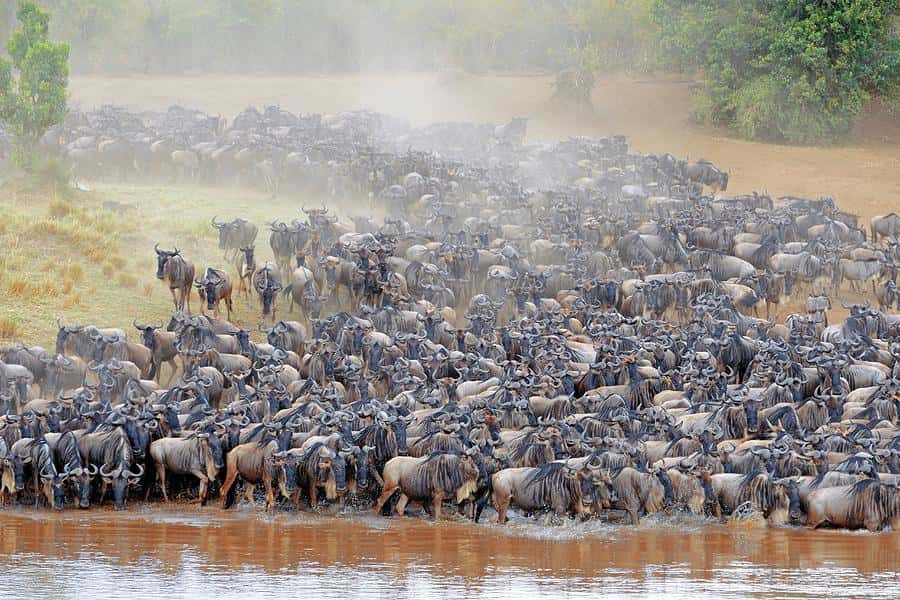
The Kenya Chapter: Timing and Arrival
The Great Migration in Kenya occurs from July to October when 1.5 million wildebeests enter the Masai Mara. The arrival of these vast herds marks the beginning of one of Africa’s most spectacular wildlife experiences. The first herds of wildebeest typically start arriving in the Masai Mara in mid to late July, transforming the reserve from a relatively quiet conservation area into a bustling wildlife metropolis.
In general, the best time to see the Great Migration in the Masai Mara is from July to October, though visitors must remember that nature operates on its own schedule. Weather patterns, rainfall, and grass growth all influence the exact timing of the herds’ movements, making each year’s migration unique in its timing and intensity.
The Dramatic Mara River Crossings
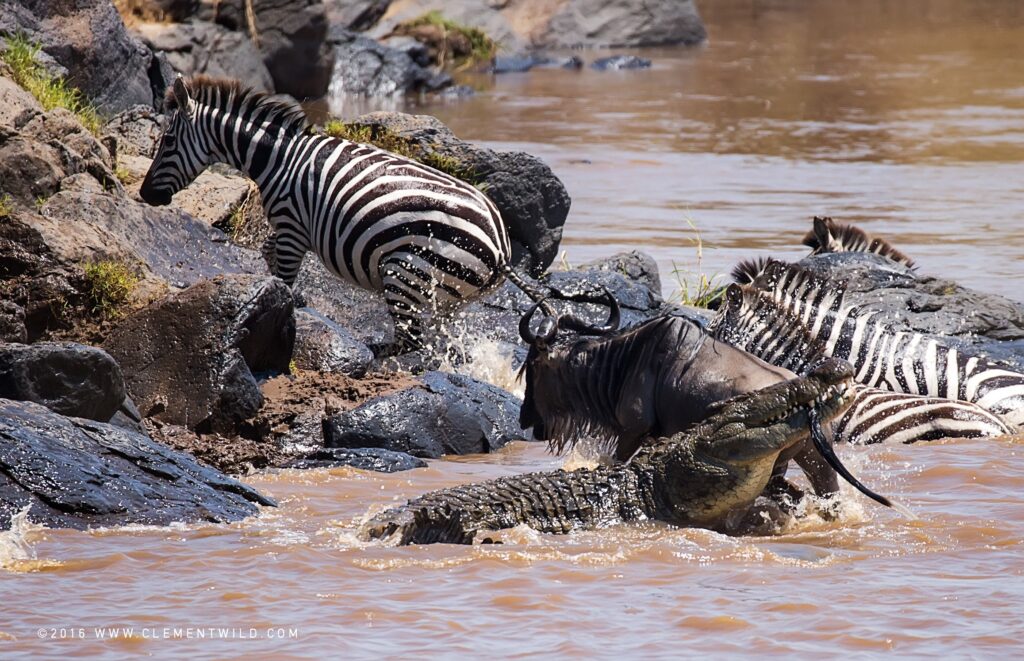
The most iconic and anticipated aspect of the migration in Kenya is the Mara River crossing. One of the most requested events in the migration is the arrival crossing of the Mara River that occurs around late July to August with parts of September and again on their return south, around the last two weeks of October through early November.
Each year, more than 1.5 million wildebeest trek from the Serengeti to the Masai Mara and back again in search of fresh grazing. Their crossing of the Mara River is the climax of this odyssey, a spectacle filled with drama, death and endeavour. The river crossings represent some of the most challenging moments in the migration, as animals face swift currents, steep banks, and the ever-present threat of Nile crocodiles.
August is generally considered the best time to witness the dramatic river crossings from the northern Serengeti into the Masai Mara, though the timing can vary depending on rainfall patterns and the movement of the herds. The crossings don’t happen on a predictable schedule; instead, they occur when the pressure of the herd, combined with the need for fresh grazing, compels the animals to brave the dangerous waters.
The Circle of Life and Predator-Prey Drama
The migration brings with it an incredible display of predator-prey interactions. This natural wonder is a dramatic display of survival as they cross rivers teeming with crocodiles and face predators on the plains. The abundance of prey animals attracts large numbers of predators, creating exceptional opportunities for witnessing natural hunting behaviors.
Lions, leopards, cheetahs, and hyenas all benefit from the migration’s bounty, with predator populations often timing their own reproductive cycles to coincide with the arrival of the herds. The constant drama of life and death plays out across the Maasai Mara’s plains, providing visitors with unforgettable wildlife encounters.
Ecosystem Impact and Significance
The Great Wildebeest Migration is significant for the Masai Mara ecosystem as it influences predator-prey interactions, herbivore population control, and grassland maintenance. It plays a crucial role in maintaining the ecosystem’s balance. The migration serves as a natural fertilization system, with millions of animals depositing nutrients across the landscape through their droppings.
The grazing patterns of the migrating herds help maintain the grassland ecosystem, preventing any single area from being overgrazed while allowing others to recover. This natural rotation system has sustained the East African savanna for millennia and continues to be essential for the health of the ecosystem.
The Journey’s Origins and Lifecycle
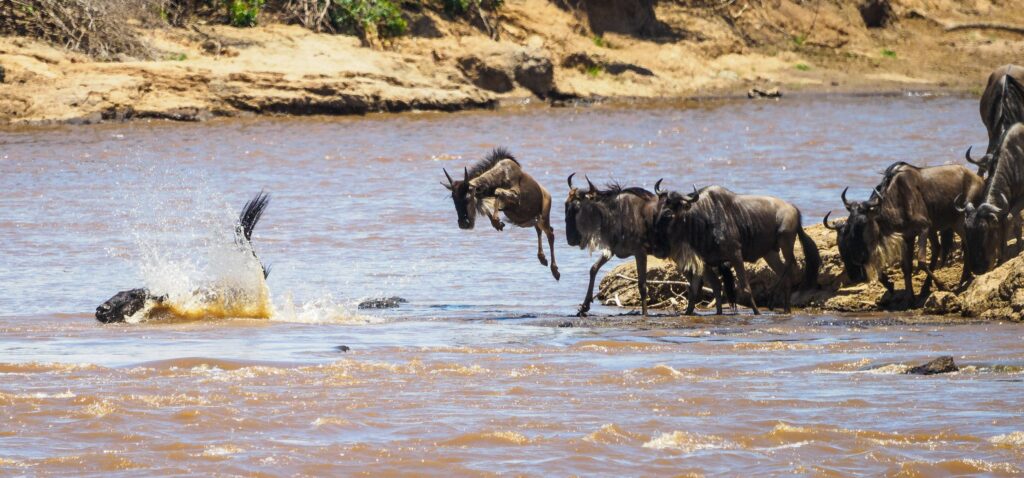
It is believed that the wildebeest life starts in Ndutu Conservation Area and Serengeti South, where more than 8000 Wildebeest Calves are born daily and later migrate up North to Serengeti North and later Masai Mara in Kenya. This incredible birthing statistic highlights the migration’s role in the species’ reproductive cycle.
The timing of births is synchronized with the rains and fresh grass growth, ensuring that young calves have the best possible start in life. By the time the herds reach the Maasai Mara, many of the young wildebeest have grown strong enough to undertake the challenging river crossings and navigate the predator-rich environment.
Planning Your Migration Experience
For those planning to witness this natural wonder, timing is crucial. Based on decades of experience, we would choose mid July to late August as the best time to see the migration, though flexibility in travel dates can significantly improve your chances of witnessing dramatic crossings.
The migration is a year-round phenomenon, but the best time to witness the dramatic river crossings is from July to October. However, it’s important to remember that the migration is not a single event but rather a continuous process that unfolds differently each year based on environmental conditions.
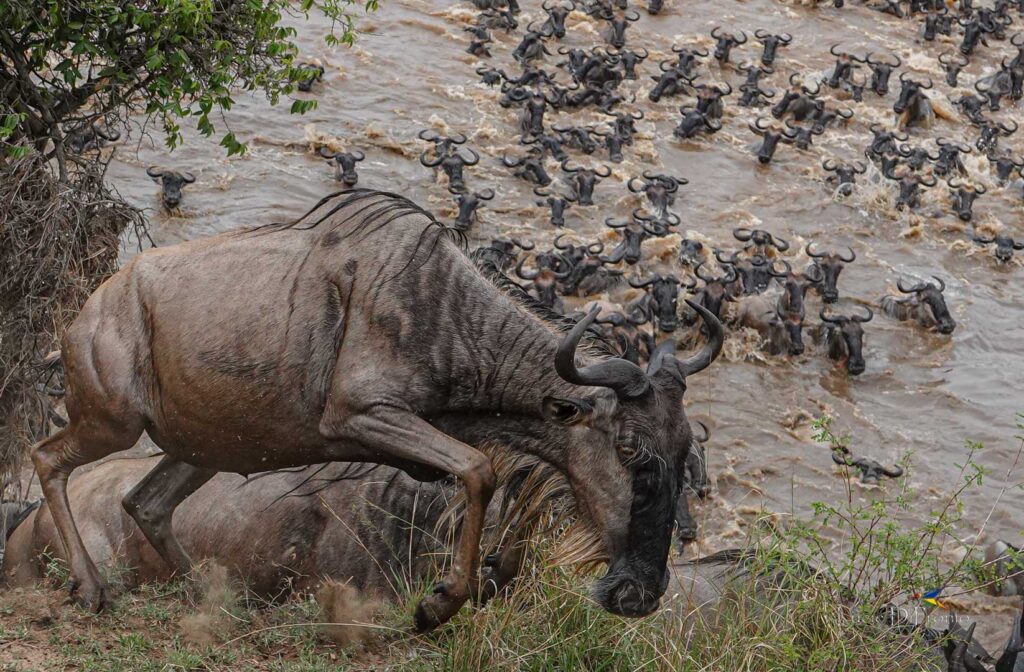
The Return Journey
The migration doesn’t end with the arrival in the Maasai Mara. The wildebeest cross over the Mara River in late July through August and early September, then again when they travel back south, in late October and early November. This return journey is often less publicized but equally spectacular, as the herds begin their journey back to the Serengeti’s southern plains.
The return crossing can be just as dramatic as the initial arrival, with animals once again facing the challenges of the Mara River and the predators that await them on both sides.
Challenges and Conservation
During the migration, wildebeest face significant challenges beyond just predators and river crossings. Human encroachment, climate change, and habitat fragmentation all pose threats to this ancient migration route. Conservation efforts in both Kenya and Tanzania are crucial for maintaining the corridors that allow this spectacular movement to continue.
The migration faces increasing pressure from agricultural development, infrastructure projects, and changing rainfall patterns. These challenges make the conservation of the Maasai Mara and surrounding ecosystem areas more critical than ever.
Best Viewing Strategies
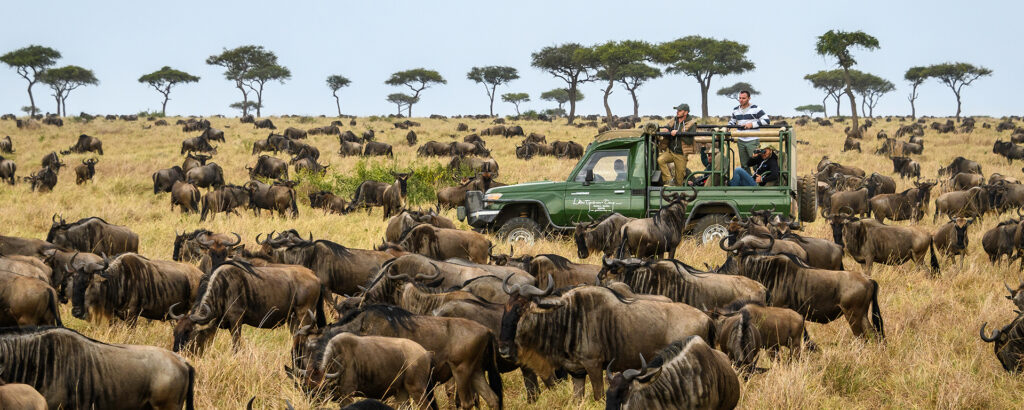
To maximize your chances of witnessing the most dramatic aspects of the migration, consider the river crossing areas along the Mara River. Stay in the same spot for a few solid days at a time, rather than hopping from one lodge to the next. This approach allows you to be in position when crossings occur and provides multiple opportunities to witness different aspects of the migration.
The unpredictable nature of the crossings means that patience and flexibility are essential. Some visitors may witness multiple crossings in a single day, while others may wait several days for the right conditions to prompt the herds to cross.
Photography and Documentation
The migration offers unparalleled opportunities for wildlife photography and documentation. The sheer scale of the herds, combined with dramatic river crossings and predator interactions, creates countless opportunities for capturing extraordinary images. However, the dusty conditions and unpredictable animal behavior require preparation and appropriate equipment.
Early morning and late afternoon provide the best lighting conditions for photography, while the midday heat often drives animals to seek shade, reducing activity levels. The golden hours around sunrise and sunset offer the most dramatic lighting for capturing the migration’s beauty.
Cultural Significance
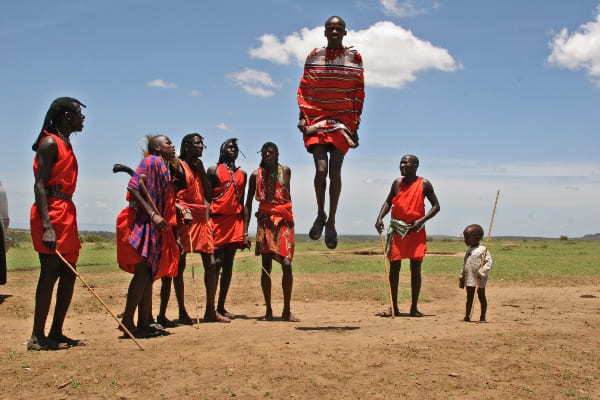
The migration holds deep cultural significance for the Maasai people, who have coexisted with these animal movements for centuries. Traditional Maasai culture includes extensive knowledge of animal behavior and migration patterns, passed down through generations. This indigenous knowledge continues to inform conservation efforts and tourism strategies in the region.
The Maasai Mara National Reserve itself is named after the Maasai people and the Mara River, reflecting the deep connection between human culture and natural phenomena in this region.
Climate and Weather Considerations
The migration’s timing is intrinsically linked to East Africa’s rainfall patterns. The rains determine grass growth, which in turn influences the movement of the herds. Climate change and shifting weather patterns have begun to affect migration timing, making it even more unpredictable than in the past.
Understanding these weather patterns can help visitors time their trips more effectively, though the increasing variability means that flexibility and patience are more important than ever.
The Economic Impact
The Great Wildebeest Migration represents a significant economic driver for Kenya’s tourism industry. The influx of visitors during migration season supports local communities, conservation efforts, and the broader Kenyan economy. This economic value provides additional incentive for conservation efforts and sustainable tourism practices.
The migration’s economic importance extends beyond direct tourism revenue, supporting employment in guiding, hospitality, transportation, and numerous other sectors that benefit from the annual influx of wildlife enthusiasts.
Looking Forward
As we look to the future, the Great Wildebeest Migration faces both opportunities and challenges. Improved conservation efforts, better understanding of migration patterns, and increased awareness of the ecosystem’s importance provide hope for the migration’s continuation. However, ongoing threats from human development, climate change, and habitat fragmentation require continued vigilance and action.
The migration serves as a powerful reminder of the interconnectedness of ecosystems and the importance of conservation efforts that transcend national boundaries. The cooperation between Kenya and Tanzania in managing this shared natural heritage demonstrates the potential for international collaboration in wildlife conservation.
Conclusion
The Great Wildebeest Migration in Kenya’s Maasai Mara represents one of nature’s most spectacular displays of life, death, and survival. This ancient journey continues to captivate visitors from around the world, offering a glimpse into the raw power and beauty of the natural world. From the dramatic river crossings to the endless horizons filled with moving animals, the migration provides an experience that connects us with the fundamental forces that shape life on Earth.
For those fortunate enough to witness this natural wonder, the migration offers more than just spectacular wildlife viewing—it provides a profound reminder of our planet’s incredible biodiversity and the urgent need to protect these irreplaceable natural phenomena for future generations. The thundering hooves of nearly two million animals crossing the African landscape represent not just a migration, but a testament to the enduring power of nature and the importance of conservation in our modern world.
To book a rental car and driver-guide or self drive to Maasai mara for chance to witness the great migration- simply contact us now by sending an email to info@rentadriverkenya.com or call +256-700135510 to speak with us.

